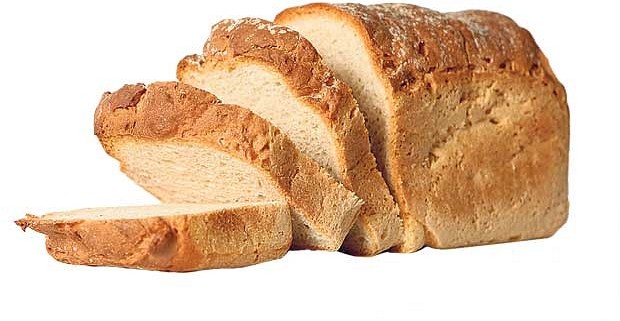Why bread is bad for you!
This week I have been on my travels. I went to watch the ATP Challenger Tennis at Surbiton where several APA athletes were competing.
Then today I was at the Elite Sport Performance Expo where I met a few cool people. Not only did I find out about some of the latest technology innervations in the sports performance field I got a few free assessments done on myself that I might integrate into our athlete profiling at APA. I did a sweat test with Precision Hydration, a body fat assessment with a bioelectrical impedance company, and a hip and shoulder joint assessment with Biomechanics Education.

My changes in body fat have been the inspiration for a few blogs over the years but my trip to the expo has inspired me to write another one. Click here, here and here for some of the previous nutrition posts. Today’s bodyfat measure showed me my body fat has been creeping back up to where I started when first approached Ultimate Performance. It’s now 17% again so that was my kick start to get back towards 10%.
This post is also inspired by one of my pro athletes who coincidently asked me about whether bread is good for athletes to have.
What is bread?
-
flour- a powder obtained by grinding grain, typically wheat, and used to make bread, cakes, and pastry.
-
Bread is usually made from a wheat–flour dough that is cultured with yeast, allowed to rise, and finally baked in an oven. Owing to its high levels of gluten (which give the dough sponginess and elasticity), common wheat (also known as bread wheat) is the most common grain used for the preparation of bread.
Some people have been eliminating foods from their diet that contain gluten in the belief that it is damaging their health. For more information about this read here.
What is gluten?
- a mixture of two proteins present in cereal grains, especially wheat, which is responsible for the elastic texture of dough.
Dr. Mike Rousell has recommended to have around 60-80g (up to 100g in large athletes) per Starch meal on training days. These meals will take place at breakfast, during workout shake, and in two meals following the workout. So you’re looking at recommendations of about 240g-400g on training days depending on size of athlete.
On non-training days he advises a starch meal at breakfast (60-80g) and five further non starch meals at all other times (20g) so around 180g per day on non-training days.
He also advises around 50g of protein per meal, eaten at each of the 6 meals in the day.
But don’t just count calories!!!!
If you use Apps like My Fitness Pal to count how many calories you eat but you don’t pay attention to what type or when you eat them you’re missing a big piece of the puzzle. For a great blog on why ‘A Calorie is Not A Calorie’ click the link. This blog talks about calorie counting but also when to have Carbohydrates.
What type of Carbohydrates are best?
There are two main types of Carbohydrates:
1. Whole grains (starches): also know as ‘complex carbohydrates:’
Include foods such as porridge oats, wheat based cereals, rice, pasta and potatoes and can be consumed when the demand for energy from the body is high. They release their energy more slowly.
Whole grain
-A whole grain is a cereal grain that contains the germ, endosperm, and bran, in contrast to refined grains, which retain only the endosperm.(Wikipedia).
Vegetables– are also a form of complex carbohydrates but can be eaten in abundance because they contain only around 26 calories/100g so should be eaten at lunch and dinner!
2. Simple carbohydrates:
–Simple carbohydrates are sugars. All simple carbohydrates are made of just one or two sugar molecules. They are the quickest source of energy, as they are very rapidly digested. Think sports drinks, confectionery, cereal bars, and fruit.
Fruit– is technically a simple carbohydrate — but it also contains fibre, vitamins and antioxidants. The fibre in fruit helps slow the digestion of carbs, which is why your blood sugar doesn’t spike as much after eating fibre-filled fruit like it does when you gulp down a fizzy drink or a chocolate bar.
As you will see below you can eat all of the different types of carbohydrates but it’s about eating them at the right time!
When should you eat Carbohydrates?
Most experts now agree that nutrient timing places a big role in weight management. It is generally agreed that the best time to eat carbohydrates is:
1. Breakfast- complex (60-80g)
2. Snacks- simple (fruit)
3. Workout-simple (50g workout shake)
4. Post-workout Meal-simple (within 30 minutes) and complex (60-80g within 2 hours)
Training days:
So on training days you will have complex carbohydrates at breakfast and in one or two meals following your workout.
Non-training days:
On non-training days you just have complex carbohydrates for breakfast!!
The rest of the day can be fruit for a snack and vegetables at lunch and dinner!!
The key take away message is to make sure you are strict with your intake of complex carbohydrates and simple sugars on non-training days!!!!! It really is the key to stay lean over Christmas. If you want to pig out a bit more on Carbohydrates then make sure you do some training before your Christmas dinner.
So going back to the pro athlete’s question about bread, he would be fine to have it at breakfast on a training day or a non-training day. But on a training day you could also have it as a post workout meal. Don’t do what I sometimes get lazy doing and always have sandwiches at lunch!!




